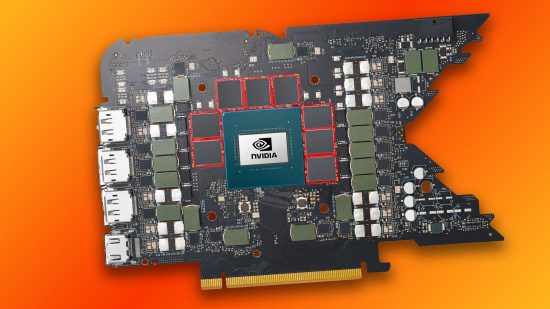Next generation Nvidia and AMD GPUs have just been given a big shot in the arm, thanks to a new memory standard that enables faster speeds and larger capacities. Memory standards body JEDEC has just published the standard for GDDR7, promising a massive increase in bandwidth and capacity over the memory used in today’s graphics cards.
At the moment, all the best graphics card options either use GDDR6 or GDDR6X VRAM, with all current AMD options using the former, as well as the Nvidia RTX 4060 and 4060 Ti. Nvidia’s higher end options use GDDR6X memory, which was the result of a collaboration with Micron and hasn’t had a standard published by JEDEC. However, GDDR7 promises to boost bandwidth compared to both these memory types.
“GDDR7 offers double the bandwidth over GDDR6,” says JEDEC, claiming that memory using the new standard could run at “192GB/s per device,” where “device” in this instance refers to a single memory chip.
The performance of memory is often expressed in terms of bandwidth per pin, where each chip has 32 pins. Samsung has already demonstrated GDDR7 VRAM running at 32Gbps per pin earlier this year, and the JEDEC spec even has headroom for bandwidth of up to 48Gbps per pin (which is how you get the 192GB/s figure above). As a point of comparison, both GDDR6 and GDDR6X max out at around 24Gbps per pin right now.
To put all of this in terms you might see on a graphics card specs list, you would only need a 256-bit memory bus for a GDDR7 graphics card to pass the 1TB/s bandwidth barrier, whereas you would need a 384-bit bus on a card such as the RTX 4090 to do that on current GDDR6X systems. If your VRAM has 48Gbps of bandwidth per pin, you would be pushing past 2TB/s with a 384-bit bus.
The secret sauce behind the higher bandwidth comes from GDDR7 moving to a 3-bit pulse amplitude modulation (PAM) encoding system, compared to the 2-bit non-return-to-zero (NRZ) signalling system used by GDDR6. In simple terms, this means GDDR7 can send three bits in every pair of clock cycles, rather than the two of GDDR6.
Interestingly, the GDDR7 spec also doubles the potential density of VRAM chips to up to 64Gb, with JEDEC support starting with 16-32Gb densities. Comparably, most GDDR6 chips today only have a density of 16Gb, even if there are technically 32Gb samples available.
To put that into perspective, an RTX 4090 currently has 12 16Gb (2GB) chips to give it a total of 24GB, but that would be 48GB if you used 12 32Gb (4GB) chips, or 96GB if they all had a 64Gb density (and 192GB if you used 24 chips).
Of course, we’re a long way from games maxing out 24GB at the moment, let alone any more, and no memory makers have suggested any densities beyond 24Gb for the GDDR7 chips they’re making at the moment. However, hopefully we’ll soon be able to stop complaining about graphics cards not having enough memory, and they will be faster too.
In the meantime, if you’re looking to build a gaming PC that needs a fast graphics card with GDDR6X memory, check out our latest RTX 4080 Super review, where we put Nvidia’s latest high-end GPU through its paces.
